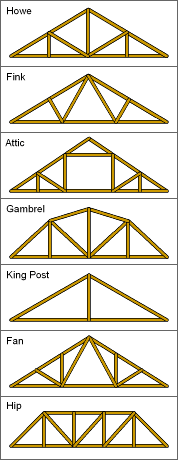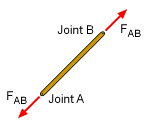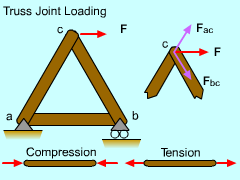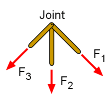| Ch 6. Structures | Multimedia Engineering Statics | ||||||
| 2-D Trusses: Joints | 2-D Trusses: Sections | 3-D Trusses | Frames and Machines | ||||
| 2-D Trusses: Method of Joints | Case Intro | Theory | Case Solution | Example |
| Chapter |
| 1. Basics |
| 2. Vectors |
| 3. Forces |
| 4. Moments |
| 5. Rigid Bodies |
| 6. Structures |
| 7. Centroids/Inertia |
| 8. Internal Loads |
| 9. Friction |
| 10. Work & Energy |
| Appendix |
| Basic Math |
| Units |
| Sections |
| eBooks |
| Dynamics |
| Fluids |
| Math |
| Mechanics |
| Statics |
| Thermodynamics |
| ©Kurt Gramoll |
|
|
||
|
|
Trusses |
|
|
Trusses are composed of thin structural members that are in compression or tension. Since there are only two joints in a given member, only two forces can act on the member. This means all members are two-force members and thus the member load acts in the direction of the two pins. If the member is straight (no curvature) then there is no bending moment in the member. When modeling trusses, it is assumed that
|
||
| Method of Joints |
||
|
|
One of the basic methods to determine loads in individual truss members is called the Method of Joints. Like the name states, the analysis is based on joints. Each joint is treated as a separate object and a free-body diagram is constructed for the joint. Because each and every joint must be in equilibrium, the basic force equations can be applied to each joint, ΣFx = 0 Each joint will only have two equations to solve for member forces since there is no moment at the joint. The means only two unknown member forces can be solved at a single joint and the order in which the joints are solved is important. Care must be taken in drawing force vectors. A compression member will 'push' the joint, but a tension member will 'pull' the joint. |
|
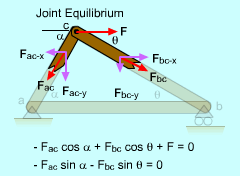 Method of Sections |
Method of Sections |
|
| A second method to solve complex trusses is called the Method of Sections. This method analyzes whole sections of a truss, instead of joints. This method is described in detail in the following section, 2-D Trusses: Sections. | ||
